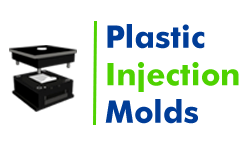- Mould Manufacturer
- Tooling
- Moulding Die
- Plastic Molding
- Plastic Injection Molding
- Injection Molding
- Nylon Injection Molding
- Injection Moulding
- Custom Injection Molding
- Injection Mould
- Injection Mouldings Process Manufacturers
- Medical Injection Molding
- Polycarbonate Injection Moulding
- Rapid Injection Moulding
- Injection Molds
- Injection Molding Cost
- Injection Molding Suppliers
- Injection Moldings
- HDPE Molding
- Metal Injection Molding
- Rubber Injection Molding
- Mold Designing
- Prototyping
- Automotive Injection Molding
- Blow Molding
- 3D Printing
What are the benefits of 3D Product Modeling in Product Design?
Precision and detail: 3D models allow designers to capture intricate details, ensuring an accurate digital representation of each part in the product, which is critical for comprehensive design evaluation.
Iterative design excellence: The iterative nature of 3D product modeling enables designers to rapidly refine and optimize designs. This iterative process enhances the overall quality of the product by accommodating continuous improvements.
Realistic visualization: 3D modeling provides a life-like view of the product, helping designers and manufacturers understand the end result with unprecedented realism, reducing uncertainties in the design process.
Efficient prototyping: The digital nature of 3D models accelerates the prototyping phase, allowing rapid and realistic prototypes. This accelerates the overall product development timeline and facilitates early identification of design flaws.
Key Challenges in Product Modeling
Complexity of detailed designs: Complex and detailed product designs pose a crucial challenge, demanding advanced skills and expertise from designers to accurately represent every element digitally.
Learning curve for designers: The transition to product modeling often presents a learning curve for designers accustomed to traditional methods, impacting initial efficiency and productivity until proficiency is achieved.
Software Compatibility Issues: The diversity of design software can create compatibility issues, hindering seamless collaboration and data exchange between designers and manufacturers.
Version Control: To keep a track of various changes and iterations to a design while maintaining version control can be complex, impacting collaboration and workflow efficiency.
3D Part Modeling: Precision at the Micro Level
3D part modeling is an art of precision, highlighting the micro-level intricacies of a design. This meticulous process involves creating digital blueprints with extreme precision, defining dimensions and shapes down to the smallest detail. Designers navigate the virtual sphere, sculpting pixels into complex polygons, ensuring a seamless blend of form and function. The attention to precision extends to simulating material textures and surface finishes, providing a realistic touch to virtual creation. The culmination of this precise craftsmanship occurs when the digital blueprint is transformed into physical reality through 3D printing, exemplifying the art of translating micro-level details into tangible perfection.
3D Part Design: Bringing Concepts to Life
Bringing concepts to life is the essence of 3D part design effort. It starts with an idea, a spark of imagination which develops into a virtual blueprint. The magic unfolds in the digital realm, where skilled designers carefully carve and refine, shaping pixels into intricate forms. Beyond just visual appeal, the process involves thoughtful consideration of materials and surface finishes, adding a touch of realism to the envisioned piece. Iteration and testing act as refining forces, ensuring that digital creations seamlessly align with their intended purpose. The final transformation occurs when the digital concept is transformed into a tangible reality through the miracle of 3D printing, marking the journey from imagination to realization.
At Plastic Injection Molds, we specialize in providing top-tier 3D modeling and precision part design services tailored to meet your unique specifications. Our expert team is dedicated to turning your concepts into reality, ensuring unmatched quality and accuracy in every project. With a commitment to excellence, we utilize cutting-edge technology and industry-leading techniques to create custom solutions that exceed expectations. Whether you require complex 3D models or specialized part designs, our company stands as your reliable partner in bringing your vision to life. Enhance your manufacturing efforts with us, where innovation and precision meet to bring your ideas to life. Your satisfaction is our priority, and we take pride in delivering results that drive your success.
FAQ
- Q1. How Long Should 3D Modeling Take?
Depending on its complexity, 3D modeling takes different amounts of time. Though complex designs might take weeks, simple models can be completed in a few hours. To effectively estimate modeling time, companies such as Plastic Injection Molds usually take into account the complexity of the design, the needs of the customer, and the project requirements.
- Q2. How Is 3D Modeling Used In Product Design?
Plastic Injection Molds uses 3D modeling in product design for testing, visualization, and prototyping. Designers may save money and time by using it to build intricate digital representations of things, swiftly iterate ideas, mimic manufacturing processes, and find any problems before production.
- Q3. Why Is 3D Modeling Useful?
Plastic injection molds benefit from 3D modeling since it expedites the product development process. It makes it possible for designers, engineers, and clients to communicate effectively, visualize ideas precisely, and prototype quickly. Digital models allow for quick modifications, which lowers mistake rates and optimizes designs for production, improving the quality of the final product.




